Canada’s police agencies would have given anything to lurk at the meeting.
It was May 2014. Almost 60 Indigenous activists had gathered at a rundown retreat centre in Nova Scotia. The smell of burning sage wafted through the halls. A newly built sweat lodge sat on a grassy knoll outside, overlooking a bay where two rivers merged.
They came from every corner of the country — young and old, representing hereditary governments and elected band councils. But they had one thing in common: each of their First Nations had been branded “communities of concern” in surveillance reports by the RCMP.
Their crime? Having engaged in non-violent, disruptive direct action for their land rights. And they had plans to do even more.
The founders of this network — called Defenders of the Land — included key leaders of the Unist’ot’en camp from Wet’suwet’en territory, radical intellectuals like Arthur Manuel and Russ Diabo, and a matriarch from Grassy Narrows who had overseen the longest running blockade in Canadian history.
All of those present intimately understood a certain fact: their blockades, sit-ins and encampments on the land had resulted in victories against governments and resource companies, despite lectures from media pundits about how such tactics were counterproductive.
They had, however, come to the conclusion that fighting their battles in isolation had not resulted in enduring systemic change. Even many of their achievements — blocking an open pit mine or oil pipeline, developing a sustainable forestry or ocean management plan, starting a renewable energy project or a healing centre — remained tenuous, poorly supported, or potentially reversible.
The goal of their gatherings, which had begun in 2008, was simple but ambitious: to coordinate their activities on an unprecedented scale. If they wanted the federal and provincial governments to honour and implement their rights and recognize genuine self-government, they would have to take their actions national.
In the wake of blockades across the country in solidarity with Wet’suwet’en hereditary chiefs’ opposition to the Coastal GasLink pipeline, and with non-Indigenous people showing support in large and growing numbers, the vision of the Defenders of the Land is closer to realization than it has ever been.
Victors in court, victims on the land
“They want to pick you off, one by one,” Arthur Manuel counselled from the front of the room.
Manuel, a gruff, plainspoken activist and former chief of the Neskonlith Indian Band in British Columbia, was leading a breakout session on the group’s organizing prospects.
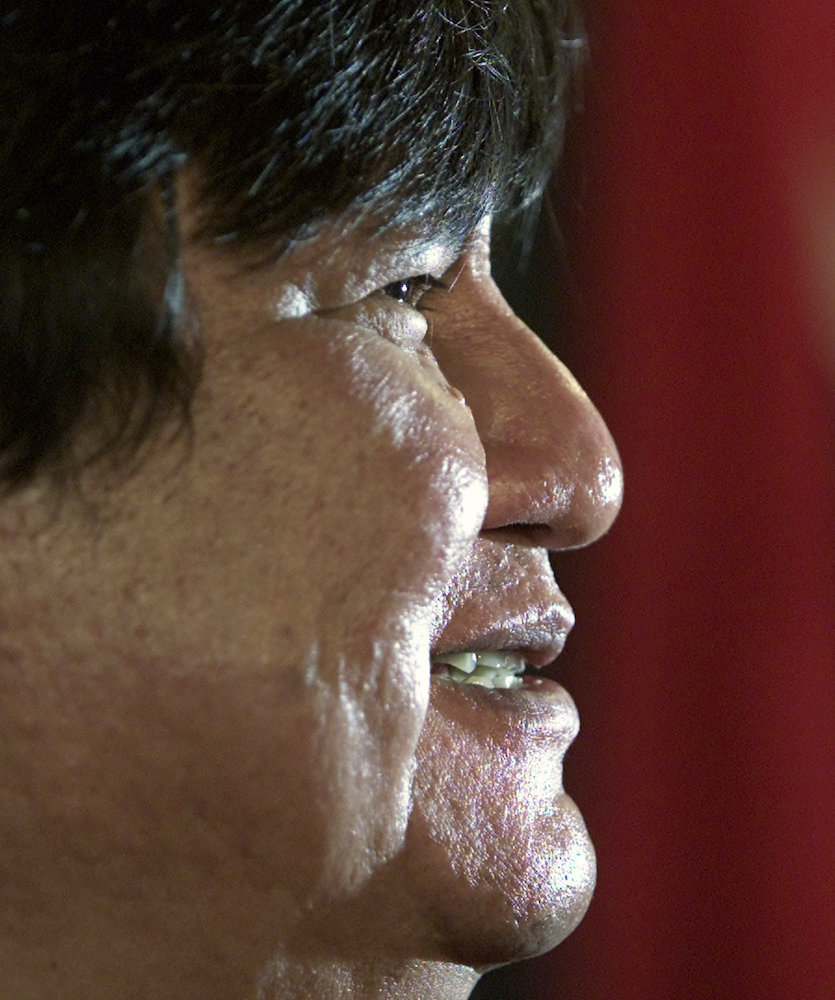
A creative, visionary thinker from a line of Secwepemc leaders, Manuel had developed a compelling theory of Canadian decolonization. Over the decades, he explained, Indigenous peoples had won a set of legal tools: affirmation of Aboriginal rights in the constitution; major rulings from the Supreme Court of Canada; and the United Nations Declaration on the Rights of Indigenous Peoples. If wielded effectively, these could potentially remake the country, offering a potent challenge to corporate-led resource extraction and ensuring that First Nations would recover an adequate land base and develop sustainable, self-sufficient economies.
But winning legal rulings alone was no guarantee that governments would respect and implement them. “Look, we’ve gotten the Supreme Court of Canada to recognize Aboriginal rights and title, yet not one square inch has been implemented on the ground,” Manuel said. “And when people try to implement their rights, they run into provincial jurisdiction and get put back on their ass.”
For instance, when the Supreme Court of Canada had handed down the Delgamuukw decision in 1997 — prompted by the hereditary chiefs of the Wet’suwet’en and the Gitxsan Nation who had mounted logging and railway blockades in the years before — it sent shockwaves across the country. Aboriginal title still existed in unceded territories across B.C. and elsewhere and would have to be settled. But rather than work out how to share decision-making over Indigenous territories, as the judges were essentially directing, both provincial and federal governments continued to seek to abolish the newly recognized land rights.
This had nothing to do with legality, and everything to do with power. To illustrate the government’s selective approach to the law, Manuel talked about an 1832 U.S. Supreme Court ruling written by chief justice John Marshall that found the Cherokee Nation had title to their territory and the state of Georgia had no jurisdiction over their lands. “Marshall has made his decision,” president Andrew Jackson responded, “now let us see him enforce it.” The Cherokee were then violently marched off their lands in what became known as the Trail of Tears.
The Canadian government’s preferred method for dispossession, Manuel reminded everyone, was not through outright violence but through orderly negotiations. Taking advantage of Indigenous communities’ poverty, they offer those First Nations who still hold Aboriginal Title some money and small parcels of land but require them to sign away in perpetuity their rights to much of their territory — rivers, forests, mountains, farmland, and everything underneath. Those nations refusing to enter into what Manuel called “dead-end negotiations,” like the Wet’suwet’en or the Secwepemc in the interior of B.C., are left to deal with the heavy incursion of resource companies on their lands.
Sherry Pictou, a tall, lanky professor and activist from the nearby Mi'kmaw Bear River First Nation, stood up to underline Manuel’s points. She reminded everyone that her community had been “caught flat-footed” when the Supreme Court of Canada made another historic ruling, the Marshall decision in 1999. Donald Marshall Jr., a Mi'kmaw fisher, had been charged for catching eels out of season without a licence. The ruling recognized the right of the Mi'kmaw to make a “moderate livelihood” through a commercial fishery, which would be exempted from some of the government rules that bound non-native fishers.
“We weren’t prepared to win,” Pictou said. “Corporations and the government were quick to interpret the decision in a biased way, and then to impose their interpretation by force.”
Non-native fishers, whipped into a fury by media and politicians who stoked misunderstanding of the ruling, destroyed thousands of Mi'kmaw lobster traps and ransacked fish-processing plants. And when Mi'kmaw fishers took their boats into the bay, acting on their newly recognized fishing rights, they were dangerously attacked and rammed by non-native boats and arrested by the Canadian Coast Guard.
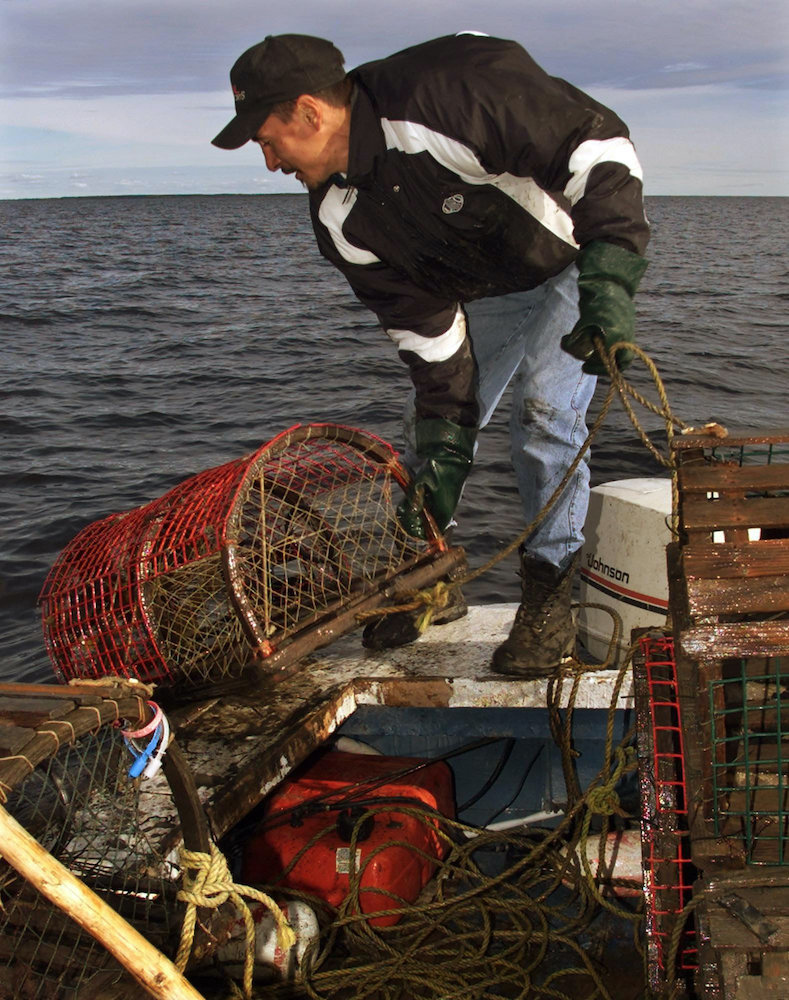
Victors in court, the Mi'kmaw became victims on the water.
There were many people from such Indigenous communities in the room in Nova Scotia in 2014 — holders of potentially powerful legal rights who lacked the clout to see them fully implemented. And when, as a last resort, they went on the land to peacefully stop projects that were illegal even by Canadian laws, they were met by police batons, or the threat of even worse violence.
There was Marylynn Poucachiche, a mother of five from Barriere Lake, an Algonquin First Nation in northern Quebec that had fought for decades for a sustainable forestry plan for their territory, which is twice the size of Prince Edward Island. Nearly a quarter of her community had faced criminal charges from their blockades. For a time, Poucachiche was confined to house arrest on the reserve (a particularly cruel punishment for someone who hunted and fished and spent summers on a cabin on her family’s territory).
There was Suzanne Patless, a fast-talking member of the Mi’kmaw Warrior Society, a group that had tried to protect Mi’kmaw fisherman 15 years before and more recently been involved in an anti-fracking blockade in nearby Elsipogtog that ended with an armed RCMP invasion. Their efforts would soon win a drilling moratorium across New Brunswick, but her boyfriend remained in prison on charges stemming from the protests.
And in a corner of the room there was Judy DaSilva, who played a hand drum through the weekend. An Elder from Grassy Narrows, she had led blockades against clearcut logging on their territory for nearly two decades. A year later, she would be served with a lawsuit and injunction by CN for organizing a water ceremony near train tracks close to her community. “The first law of the land is that the fight is not within the reserve,” she told the gathering. “Our people need to break out of that mentality.”
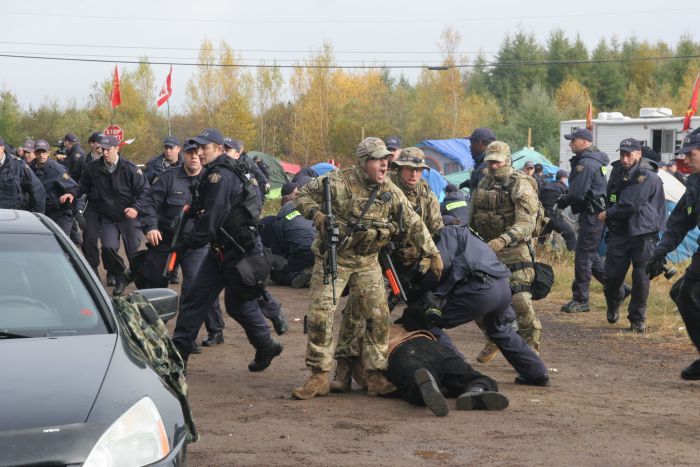
The Defenders of the Land had taken the fight well outside the reserve, winning defensive battles by blocking destructive resource projects on their territories. What remained to be done was to go on the offensive: to generate the kind of power that could finally see their rights materialized, fulfilling the promise of Arthur Manuel’s strategy of decolonization.
“We don’t just want court rulings to give us a good feeling for two or three days,” Manuel said. “We want them implemented. But change never comes from judges or politicians. Change only comes from direct action on the ground, backed up by a movement. That’s why all of you grassroots land defenders are so important.”
The election of Justin Trudeau 18 months later would usher in a spectacle of reconciliation politics, but the policies of dispossession would remain unchanged — indeed, initially, they would become even harder to fight. In the face of government spin, corporate pressure and police action, defenders would have to build a movement that would turn their abstract and oft-ignored rights into concrete, unavoidable realities.
Think of them as Canada’s irreconcilables: Indigenous peoples who know that to live as self-determining nations with a thriving connection to their lands they have to become, by necessity, outlaws. An irony that escaped no one at the gathering was that they were treated as criminals for doing a job that served everyone in Canada: protecting the forests, valleys, waters and climate that all life depends on.
Old tactics, new alliances
The network of Defenders of the Land was itself born of an unprecedented co-ordination of Indigenous action in alliance with non-Indigenous support.
In 2008, the co-chief Robert Lovelace of the Ardoch Algonquins was sentenced to six months in jail for blocking a uranium mining company from their territory not far from Kingston, Ont. Soon after, several leaders of a small, remote community in Ontario’s far north, the KI First Nation, were imprisoned as well.
The KI Nation was represented in Nova Scotia by band Councillor Sam McKay. Wearing his trademark stiff leather jacket, a contrast to his soft, impish smile, McKay spoke of their protests against platinum miner Platinex. Their organizing had built slowly in the mid-2000s, but when the company refused to heed a mining moratorium declared by communities in northern Ontario, things took a dramatic turn. McKay and others pulled out stakes marking a prospecting site. Platinex then won an injunction — a legal tool biased toward corporate power that is used frequently against Indigenous peoples, including recently the Wet’suwet’en — that barred the community from obstructing their exploration. They kept up their resistance. When the company tried to land a floatplane on their main lake, KI Chief Donny Morris drove out in a motorboat and circled on the water, daring the plane to land on him, until the pilot gave up and flew away. McKay, Morris and four other band councillors were sentenced to six months in jail.
Outrage about their imprisonment soon inspired a wave of solidarity organizing in Toronto by a coalition of social justice groups, student associations and labour unions. An alliance formed between KI and Ardoch, as well as two other Anishinaabe communities, Grassy Narrows and Barriere Lake. The campaign, which culminated in a multi-day camp at Ontario’s legislature, built enough pressure to move an appeals judge to release Lovelace and the KI 6 a few months into their jail sentences. The Ontario government called it quits and cancelled the permit of Platinex and bought them out for $5 million, and launched a review of Ontario’s Mining Act (a precedent that the B.C. government could surely follow now with Coastal GasLink).
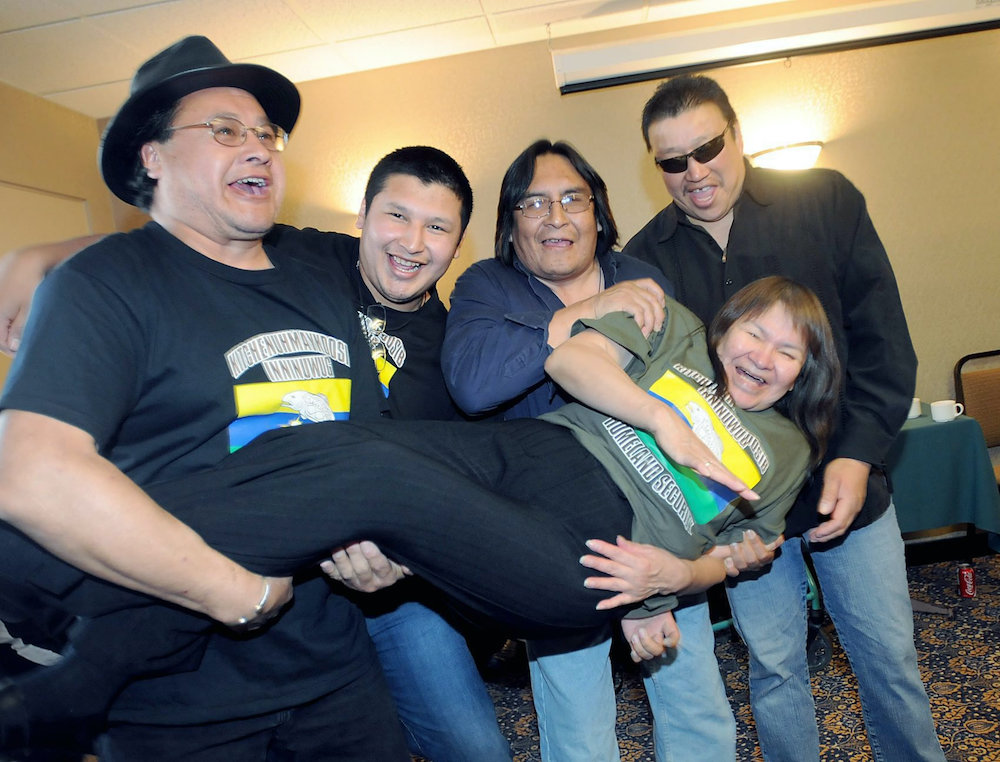
On the heels of their victory, the alliance chose not only to stick together but to expand nationally, inviting other Indigenous land defenders from across the country to a gathering in Winnipeg later that year. It was the beginning of a long cycle of Indigenous protest.
It was no coincidence that around the time of the formation of Defenders of the Land, the RCMP was expressing “growing concern” about the “potential for unrest in Aboriginal communities” and significantly boosted their capacity to spy on Indigenous communities. Indeed, on the heels of a blockade of the CN railway between Toronto and Montreal by the Tyendinaga First Nation in 2007, the RCMP secretly gave a prescient warning to the federal government: “The recent CN strike represents the extent to which a national railway blockade could effect [sic] the economy of Canada.”
At the founding Winnipeg meeting, everyone would have strongly agreed with the RCMP assessment. Disrupting corporate accumulation and traffic across Indigenous lands was a powerful leverage point to push for Indigenous rights. The new network was blessed by Milton Lawrence Born with a Tooth, a Blackfoot activist who had become a legend when the Alberta government dammed the Oldman River in 1990, threatening to flood Peigan burial grounds. Born with a Tooth used an excavator to divert the river around the dam in an attempt to return it to its natural flow. (He had hit on the tactic by thinking of beavers, he said before he passed away in 2019.)
In attendance at those meetings were three activists from Wet’suwet’en territory, Mel Bazil of the Gitimt’en Clan and Warner Naziel and Freda Huson, a hereditary chief and subchief of the Unis’to’ten Clan. In the following years Naziel and Huson would begin re-occupying their lands, building a land-based healing centre and vigorously asserting opposition to several pipeline projects. That would include a gas pipeline being built by Coastal GasLink, ignored by environmental organizations who were focusing at the time on tar sands pipelines.
Key facilitation was provided by organizers from the Indigenous Environmental Network like Clayton Thomas-Mueller and Heather Milton-Lightening, brilliant Cree strategists and organizers who travelled across North America training communities in the methods of non-violent direct action. There had not been anything like this in two generations of Indigenous politics: a grassroots organization of land defenders that could provide national leadership and coordinated action. At the same time, they could act as an alternative to establishment organizations like the Assembly of First Nations, whose dependency on funding from the federal government had long compromised its political independence.
Many in the network also envisioned a non-native solidarity network working alongside Defenders of the Land. Solidarity was crucial to building the kind of power that could change the calculus of what was politically possible. This was partly a question of math: Indigenous peoples make up barely five per cent of Canada’s population, so any political transformation would require the support of non-Indigenous people and organizations. The approach of the network to working with non-native organizers was open-minded and practical: if a non-native person had knowledge and skills to contribute, they were welcome.
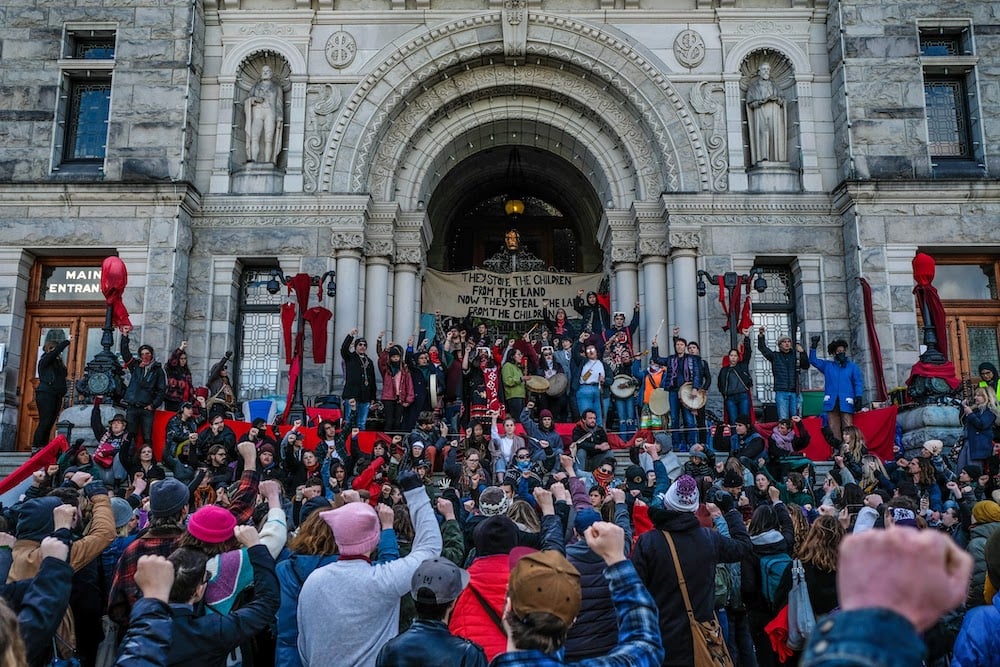
Several had important roles. Corvin Russell, a Toronto strategist who was a polyglot and professional jack-of-all-trades, was a core organizer, and David Sone, Harsha Walia and Shiri Pasternak played key parts. Another major supporter was Peter Kulchyski, a professor of Native studies at the University of Manitoba. No typical academic, he was a Marxist with a mullet who had grown up in a rural area and was a rare non-native person who had attended a residential school. His advice to non-native people wanting to support Indigenous rights, especially if they were white and middle class, was summed up in a memorable phrase: “You should spend your privilege.” They could get arrested alongside or in place of Indigenous peoples, providing some protection by exploiting racist double standards whereby they are treated less harshly by the police and given more sympathetic coverage by the media. “My job is to help people into the loving arms of the police,” he would say at Defenders of the Land meetings, always to laughs.
Through the 1990s and 2000s solidarity work was often conducted by a patchwork of collectives, based in churches or the anarchist movement. Crisis moments when Indigenous land defence was met by police or military repression, like Oka, Ipperwash or Caledonia, had seen surges of such organizing, but it had never become a more permanent feature of the work of left wing or progressive organizations. Few groups integrated decolonization seriously into their missions. Basic self-education in non-native organizations was lacking, and there was little popular education happening on Indigenous rights in urban areas. Defenders of the Land aimed to change this.
Mapping Canada’s economic vulnerability
Over the following years, the network struggled to raise funds for its ambitious organizing plans. Relying on its solidarity network, however, it succeeded in holding major yearly educational events called Indigenous Sovereignty Week in dozens of cities around the country. When Defenders of the Land called for a national day of action when Canada hosted the G20 meetings in 2010, some 10,000 people marched for Indigenous rights in Toronto and actions took place across the country. The organizing nurtured the soil from which Idle No More would spring a few years later.
When a national movement did finally emerge, the leadership came less from rural communities in land struggles than from Indigenous lawyers and educators, and young Indigenous students, predominantly in urban centres (though some straddled both). Over a winter from late 2012 to early 2013, Idle No More filled malls and squares and conducted teach-ins in friendship centres and university classrooms.
While it catalyzed some organizing in rural communities, the movement’s activities remained overwhelmingly focused on cities. Its leaders, for instance, repeatedly called for marches on Parliament Hill. Stalwart members of the Defenders of the Land network like Barriere Lake, who had spent the past two decades blockading loggers and miners to force concessions from government, instead defaulted to sending carloads of residents two-and-a-half hours south to Ottawa.
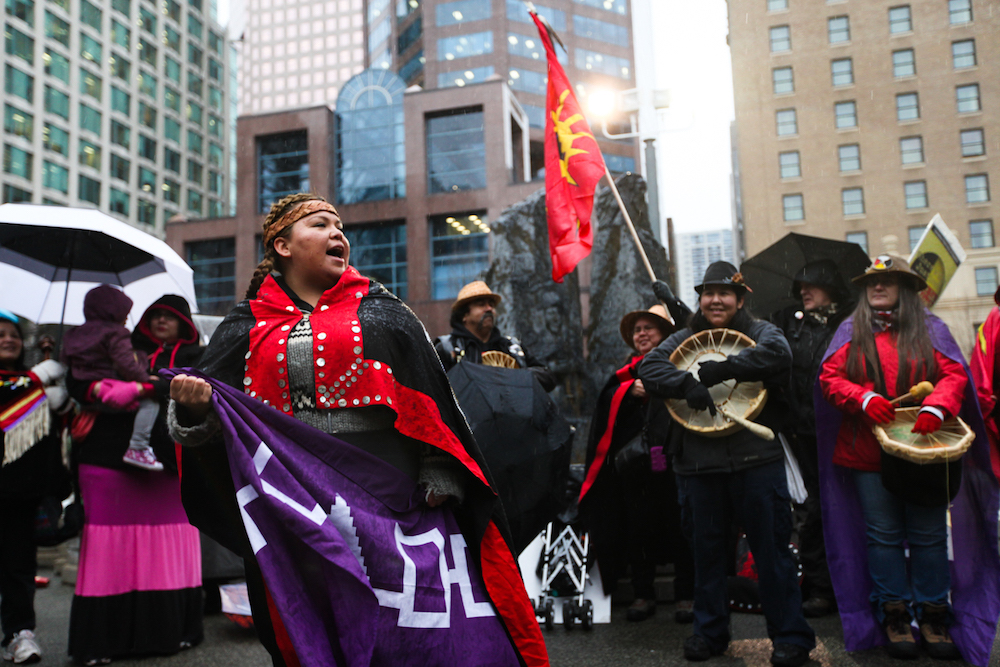
The real potential power of economic disruption, however, was not in the cities but back in the home territories of Indigenous land defenders, crisscrossed by highways, rail lines and logging roads and facing proposed pipelines, mines or mega-dams. If the movement could enlist both the growing numbers of Indigenous rights supporters in urban centres and the potential for economic disruption wielded by communities in rural areas, its bargaining power with government and industry might be decisive, providing the leverage that Arthur Manuel believed necessary to enforce Indigenous rights on the ground.
It was precisely this missing connection that had hampered the power of Idle No More. Its main leaders were averse to — and sometimes openly critical of — non-violent direct action. For instance, planned blockades of the border on Jan. 1, 2013, which would have been the movement’s first major coordinated direct action, were gaining momentum but were called off after the founders expressed disagreement with the tactic.
Later that month, on the sidelines of a larger meeting organized by unions and NGOs to plan a Canadian Social Forum in Ottawa, key members from both Defenders of the Land, including the Unis’to’ten’s Huson and Naziel, met with the founders of Idle No More met to discuss collaboration. By the end of the meeting, they had agreed on an alliance that would replace Idle No More’s wariness of non-violent direct action with an embrace of its full potential.
What stands out about the Idle No More movement is how much impact it had, despite the lack of escalation in its actions. There were brief and beautiful interruptions to the holiday routines of shoppers in malls, but no interruptions to the shipping of goods by rail or unrelenting resource extraction. In those months of heightened activity, as far as I know, police made only a few arrests. The movement nevertheless had a huge and enduring impact on the cultural and intellectual landscape: new Indigenous voices emerged into the mainstream of art, media, music, film, literature and education, challenging the myths and miseducation that has hampered support for Indigenous self-determination. It had changed the conversation, but hadn’t yet changed the power calculus.
The fundamental policies of the federal and provincial governments remained the same. And sensing the potential for further challenges, Canada’s elite engineered a new spectacle of reconciliation to contain the disruptive power of Indigenous rights activism and ensure that land dispossession could continue unimpeded.
In spring 2013, the new alliance between Defenders of the Land and Idle No More called for a “Sovereignty Summer” of direct action, but it didn’t take off.
And that lead to the Nova Scotia gathering in 2014. The heady days of Idle No More had passed as the network came together again in an effort to summon the organizational will to mount a nationally coordinated campaign. Over the course of two days, as Heather Milton-Lightening scribbled everyone’s comments on paper mounted on the walls of the retreat centre, it was clear what their struggles across the country signified — a map of the vulnerable nodes of Canada’s extractive economy, waiting to be strategically targeted.
When this gathering also failed to spark a new round of national action, many of its key participants refocused their attention on their local struggles, working quietly on popular education, fighting pipelines or clearcut logging or polluting pulp and paper mills, producing Indigenous media or building new organizations. They wondered if a new wave of national resistance would arrive and, if it did, what it would look like, keenly aware that no monumental social change had ever come about without filling the jails.
The winter of rail blockades
That wave of resistance arrived in early 2020, a cross-country flood of solidarity with land defenders in Wet’suwet’en territory whose opposition to Coastal GasLink gas pipelines were met with RCMP crackdown and arrests.
In its mix of tactics — marches, ceremonies and round dances, as well as blockades of legislatures, railways and ports — the moment blended the most inclusive expressions of Idle No More with the economically disruptive tactics that Defenders of the Land had once envisioned. By the end of February more than 200 people had been arrested. Major corporations felt the impact of direct action. And despite the barrage of negative coverage by the media, a large majority of Canadians backed action on Indigenous rights, and a significant 40 percent even supported the tactic of blockading.
The outpouring of non-native support, broader than anything seen before in Canada, had been made possible by work done in the intervening years. The campaigns against tar sands pipelines over the previous decade and a half had finally begun recognizing the leadership of Indigenous peoples. (This leadership, while it had gone unrecognized, had been there for a long time: after all, the first pipeline ever defeated in Canada, in the Mackenzie Valley in the 1970s, was beaten back by a coalition of Dene, Inuit and Métis.)
Groups like Leadnow had begun doing some education of their membership. Pull Together raised hundreds of thousands of dollars for Indigenous legal challenges against pipeline projects. The Ontario Public Service Employees Union became the first trade association to create dedicated positions for Indigenous rights officers. Indigenous Climate Action, a new organization that involved some members of Defenders of the Land but was dedicated specifically to fighting fossil fuel projects and intervening in international climate negotiations, had emerged as a powerful force. Indigenous authors topped the bestseller lists. Indigenous filmmakers won huge festival prizes. Indigenous musicians took home the Polaris Prize four of the last six years.
Arthur Manuel passed away in 2017 at 66, a devastating blow to the Defenders of the Land from which it has not recovered. But his two books, one published not long before his death and one published posthumously, have sold nearly 15,000 copies, with sales helped by a Canada Reads: The Unsettling Edition campaign spearheaded by Shiri Pasternak. Pasternak and Anishinaabe writer and professor Hayden King founded the Yellowhead Institute, the first Indigenous-led think tank in Canada, publishing incisive reports and carrying on Manuel’s intellectual legacy.
All this work provided Canada’s burgeoning climate justice movement, filled with young millennials and Generation Z activists, with a new baseline perspective. Indigenous sovereignty was now absolutely central to their way of thinking. Taking leadership from young Indigenous activists, these were the faces populating the solidarity blockades that sprung up daily around the country through February, and who walked out of university and high school classes in early March in solidarity with the Wet’suwet’en, spending their privilege in defense of Indigenous rights.
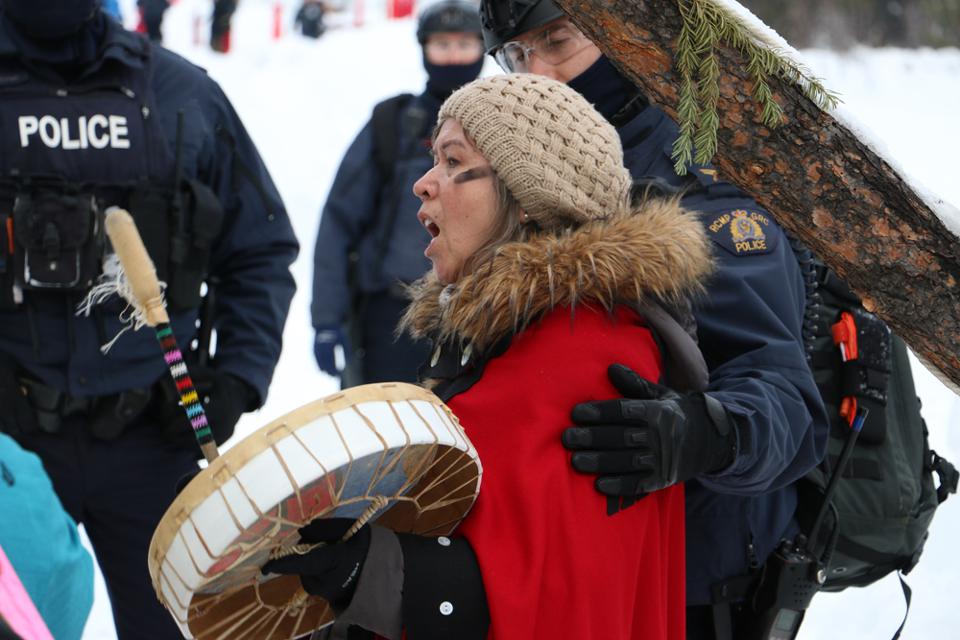
When the Standing Rock standoff over the Dakota Access Pipeline took place in 2016 — itself unthinkable without the catalyzing role of Idle No More, which spread through the U.S. and globally — it felt like a cultural tipping point. On the verge of the police crackdown Facebook became awash with people “checking-in” in the Northern Dakota community, a gesture of solidarity with the water protectors. Nearly 1.5 million people participated in the online action.
It would have been impossible to imagine that 10 or even five years before. The Standing Rocks of recent history in Canada — Oka, Gustafson, Temagami, Burnt Church, Sun Peaks, Six Nations, Elsipogtog — never seemed to inspire enough non-Indigenous people to see their liberation tied to the liberation of Indigenous peoples. But would the eagerness of non-Indigenous people to “travel” to a blockade on social media translate into joining one on highways, at logging roads, in the path of dams and mines and pipelines?
At the time, one could believe it might be possible. Now, watching the flourishing solidarity by young non-native Canadians in the wake of the Wet’suwet’en standoff, one can be certain.
So was Arthur Manuel. The vision he helped develop, sketched out on the walls of the that Nova Scotia retreat centre in 2014, of Indigenous and non-Indigenous acting in alliance to free the country of its colonial shackles, was not realized in his lifetime. But its web of relationships has grown, its pathway is clearer than ever, its promise waiting to be fulfilled. When that happens, it will transform Canada. ![]()
Read more: Indigenous, Rights + Justice, Media




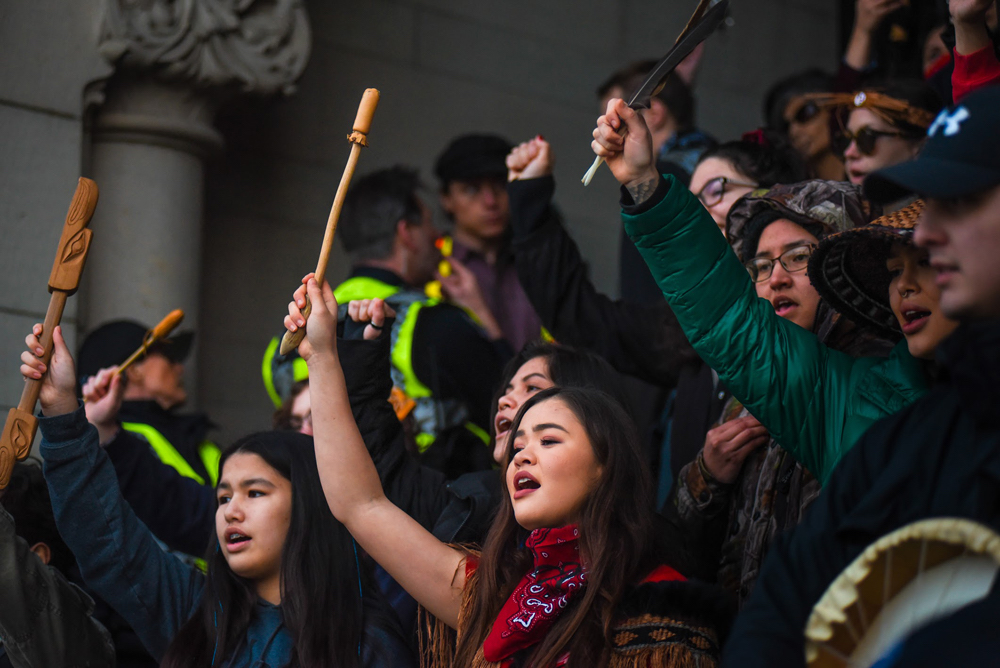












Tyee Commenting Guidelines
Comments that violate guidelines risk being deleted, and violations may result in a temporary or permanent user ban. Maintain the spirit of good conversation to stay in the discussion.
*Please note The Tyee is not a forum for spreading misinformation about COVID-19, denying its existence or minimizing its risk to public health.
Do:
Do not: